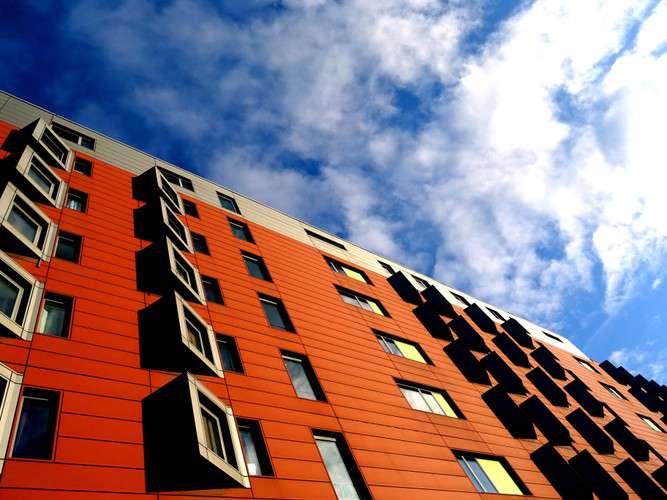Welcome to the captivating world of the RF 35mm lens. If you're seeking answers to questions such as the focus distance of the RF 35mm, what exactly RF means on a lens, or whether this lens has image stabilization, you have come to the right place. In this article, we will delve into the fascinating features and capabilities of the RF 35mm lens. From its optimal focal length to its suitability for film shooting, we'll explore the advantages and possibilities offered by this remarkable lens. Whether you are an amateur photographer looking to enhance your skills or a professional seeking to expand your creative horizons, understanding the ins and outs of the RF 35mm lens will undoubtedly help you achieve your goals. So, join us on this captivating journey as we unlock the mysteries behind the RF 35mm lens and discover the endless possibilities it offers in the world of photography.
What is the focus distance of RF 35mm?
The RF 35mm lens offers a versatile focus distance that makes it suitable for various photography scenarios. With a minimum focusing distance of just 0.17m, this lens allows you to get incredibly close to your subject, capturing intricate details with stunning clarity. Whether you're capturing the delicate petals of a flower or the fine texture of a product, the RF 35mm lens ensures that your subject will be sharply in focus. Furthermore, it also offers a maximum magnification of 0.5x, enabling you to create compelling macro shots. The ability to focus at such close distances opens up a whole new world of creative possibilities, allowing you to explore and capture the tiniest details that might otherwise be overlooked. So, whether you're a portrait photographer, a street photographer, or someone who simply enjoys capturing the beauty of everyday objects up close, the RF 35mm lens will not disappoint.
What is RF on a lens?
RF, which stands for "Rear Focus," refers to a type of lens design where only certain optical elements within the lens move to achieve focus. This design offers several advantages, including fast and accurate autofocus performance. With RF lenses, the rear element of the lens is responsible for focusing, while the front element and other components remain stationary. This not only results in faster autofocus but also helps to reduce the overall size and weight of the lens. Additionally, RF lenses are specifically designed for use with Canon's RF mount, which offers a wider lens mount diameter and shorter flange distance. This combination of advanced lens design and the RF mount's capabilities ensures excellent image quality, enhanced autofocus performance, and seamless integration with Canon's mirrorless camera bodies. So, when you see RF on a lens, you can be assured that you are working with a cutting-edge lens that will deliver exceptional results.
Does the RF 35mm have image stabilization?
Yes, the RF 35mm lens is equipped with Optical Image Stabilization (IS) technology, making it a fantastic option for handheld shooting, especially in low-light situations or when using slower shutter speeds. The built-in IS system effectively compensates for camera shake, allowing you to capture sharp images without the need for a tripod. This feature is particularly beneficial when shooting in dimly lit environments or when using larger apertures to achieve shallow depth of field. Whether you're capturing landscapes, portraits, or street scenes, the image stabilization capabilities of the RF 35mm lens provide an added level of stability and ensure that every shot you take is crisp and blur-free. So, whether you're shooting handheld or using a tripod, the RF 35mm lens with image stabilization will undoubtedly enhance your ability to capture stunning, sharp images.
Is 35mm focal length good?
The 35mm focal length is undoubtedly a favorite among many photographers, and for good reason. It strikes an ideal balance between wide-angle and normal perspective, making it incredibly versatile for a wide range of photography genres. The 35mm focal length provides a natural field of view that closely resembles what the human eye sees, resulting in images that feel immersive and true to life. This characteristic makes it well-suited for street photography, documentary work, and capturing environmental portraits. Additionally, the 35mm focal length offers a good balance between capturing a wider scene and allowing you to get closer to your subject, making it a reliable choice for various situations. Furthermore, its relatively compact size and lightweight nature make it a popular option for photographers who value portability without compromising image quality. So, whether you are an enthusiast or a professional, the 35mm focal length can be an excellent choice that opens up a world of creative possibilities.

What is the best focal length for film shooting?
The choice of focal length for film shooting largely depends on the type of project and the visual aesthetic you wish to achieve. However, there are some focal lengths that have acquired a reputation for their suitability in various scenarios. One such focal length is 50mm, which is often referred to as the "normal" focal length. A 50mm lens provides a perspective that closely matches what the human eye sees, rendering scenes with a natural and true-to-life feel. This makes it a versatile choice for a wide range of subjects, from portraits to street photography. Another popular focal length is 85mm, which delivers a slightly more compressed perspective and helps to isolate subjects, making it a favorite among portrait photographers. For capturing expansive landscapes or architecture, wider focal lengths such as 24mm or 35mm are often preferred to encompass a broader field of view. Ultimately, the best focal length for film shooting depends on your creative vision and the story you aim to tell, so it's worth experimenting with different focal lengths to discover your own preferred style.
Further Inquiries about RF 35mm
1. What are the advantages of using a 35mm focal length?
The 35mm focal length offers a variety of advantages that make it a popular choice among photographers. Firstly, its wide field of view allows you to capture expansive scenes, making it ideal for landscape and architectural photography. Additionally, the 35mm focal length strikes a balance between wide-angle and normal perspective, resulting in images that appear natural and immersive. This makes it versatile for everyday shooting, whether it be street photography, documentary work, or environmental portraits. Furthermore, its relatively compact size and lightweight nature make it convenient to carry, making it a go-to option for those who value portability. Overall, the 35mm focal length provides a pleasing visual aesthetic and a wide range of creative possibilities.
2. Can the RF 35mm lens be used with other camera bodies besides Canon's RF mount?
The RF 35mm lens is specifically designed for Canon's RF mount, which means it may not have native compatibility with other camera systems. However, with the use of adapters, it is possible to mount the RF lens onto camera bodies with different lens mounts. Canon offers various adapters that allow you to use RF lenses on their older EF-mount cameras, such as those from the EOS DSLR lineup. These adapters ensure electronic communication between the lens and the camera, allowing you to retain autofocus and other functionalities. It's important to note that while adapters offer compatibility, they may not provide the same native performance as when using the lens on a camera body with a matching mount. Therefore, it is recommended to research and ensure compatibility before attempting to use the RF 35mm lens on a non-RF camera body.
3. What distinguishes the RF 35mm from other 35mm lenses in Canon's lineup?
Canon offers multiple lenses with a 35mm focal length, so it's essential to understand the differences between them. The RF 35mm lens, specifically designed for Canon's RF mount, takes advantage of the benefits offered by this mirrorless system, such as fast and accurate autofocus, improved image stabilization, and enhanced optical performance. The RF 35mm lens stands out for its compact size and lightweight construction, making it highly portable for on-the-go shooting. Additionally, it incorporates advanced features such as built-in image stabilization and a versatile minimum focusing distance, which may set it apart from other 35mm lenses in Canon's lineup. While other models like the EF 35mm lenses were designed for Canon's previous EF mount, the RF 35mm lens represents the latest technology tailored explicitly for the RF system, ensuring optimal performance and compatibility.
In conclusion, the captivating RF 35mm lens offers a versatile focus distance, optimal image stabilization, and the advantages of the RF mount. With a minimum focusing distance and a maximum magnification that allow for capturing intricate details up close, this lens opens up a world of creative possibilities. The RF designation on the lens signifies its rear focus design, which contributes to fast and accurate autofocus performance. Furthermore, the lens is equipped with image stabilization technology, ensuring sharp and blur-free images even in challenging shooting conditions. The 35mm focal length proves to be a popular and versatile choice, balancing wide-angle perspectives with a natural field of view. Whether you're an enthusiast or a professional, the RF 35mm lens, with its compact design, exceptional optical quality, and seamless integration with Canon's mirrorless system, promises to enhance your photographic journey.



